Matador Network's Blog, page 2209
September 17, 2014
14 odd facts about Australia
Australia is the smallest continent in the world but also happens to be the world’s sixth-largest nation by area. While the British didn’t colonize Australia until the late 1700s, the indigenous Australian population has inhabited the landmass for over 40,000 years. With such a long history, there’s an encyclopedic amount of interesting information about the country.
Check out these 14 things you might not know about Australia and see for yourself. 
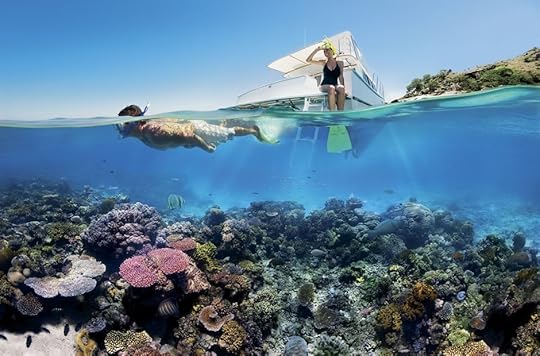
1
The Great Barrier Postal Service
The Great Barrier Reef, the world’s largest coral reef system, actually has a mailbox from which visitors can send postcards—you'll find it on the Agincourt Reef.
Photo: Wikimedia

2
No swimming!
It was illegal to swim at the beach during daylight hours in Australia from 1828 until 1902, when a beach-goer at Manly Beach defied the law. He was arrested but not charged, paving the way for future daytime swimmers and surfers.
Photo: Nigel Howe

3
And the winner is:
The Sydney Opera House was designed by Jørn Utzon, who won the competition to design the structure in 1957. His was chosen out of 233 submissions.
Photo: Hai Linh Truong
Intermission
1
50 things you probably didn’t know about the 50 states
by Matt Hershberger
1
20 things you might not know about Tokyo
by Joe Batruny
1
12 things you might not know about Washington, DC
by Joe Batruny

4
Hello? Anybody there?
Due to sheer size and the uninhabitable desert climate dominating much of the continent, Australia is the ninth least-densely populated nation in the world and has by far the least-dense population of countries with over one million citizens. The country’s population density is 3.07 people per square kilometer.
Photo: Angelo Failla

5
Challenge accepted
Australia has more than 10,000 beaches. You could visit a different beach every day for over 27 years and not manage to see them all.
Photo: Alex Proimos

6
Take that Greenland
Australia is over three times larger than Greenland, which is considered the largest island in the world. Australia is typically omitted from island rankings because it's a continent as well.
Photo: NASA

7
That's a lot of angry camels
The world’s largest camel herd is found in Australia. About 750,000 camels roam Australia’s Outback and are notorious for raiding farms.
Photo: dannebrog

8
I know this place with amazing baklava
Melbourne has the largest Greek population anywhere on the planet outside of Greece. As of 2001, the Greek Australian population of Melbourne numbered 151,785.
Photo: Edric Pascual

9
The grass is always greener...
Running from Queensland to South Australia, the Dingo Fence, or Dog Fence, is the longest fence in the world, measuring 3,488 miles. As the name suggests, it was meant to keep predator dingoes out of livestock pasture.
Photo: Philip Morton
Intermission
20 things you may not know about Walt Disney World
by Joe Batruny
34
20 things you didn’t know about Salt Lake City
by Sarah Park
6
19 things you probably didn’t know about Thailand
by Kate Siobhan Mulligan

10
They invented Uggs—or did they?
Ugg boots are claimed by Australia (New Zealand contests this), with some saying they've been worn in rural Australia since the 1920s. The popular brand UGG Australia is actually an American company, however.
Photo: Ed Dunens

11
There's no going back now
A red kangaroo and emu stand stoically on Australia’s coat of arms. The two animals were chosen due to the common belief that neither animal can move backwards easily, symbolizing a nation moving forward.
Photo: pelican

12
Australia's hidden gem
Australia’s national gemstone is opal. The country produces 97% of the world’s supply, the majority of which comes from Southern Australia.
Photo: cobalt123

13
Here's the beef
While Australia exports its beef to many markets around the world, the largest importers of Australian beef are the United States, Korea, and Japan.
Photo: Sheila

14
Australian flag
As of 2013, 27.7% of Australia’s population was born in another country. According to the same statistics, the United States’ foreign-born population comes in at a relatively paltry 14.3%.
Photo: Steve Jacobsen

What it takes to be a pro photog

Surfing the Great Lakes in the fall / Photo by author
Check out Matador Ambassador Chris Burkard’s latest film project, Arctic Swell .
I discovered a love for photography not too long ago — landscapes and surf are my favorite subject matters. When an interview assignment came up at MatadorU, I immediately knew that I wanted to interview renowned surf photographer Chris Burkard to learn how he captures such mind-blowing work and about his life as a successful photographer.
* * *
NK: How and when did you discover photography as a passion of yours?
CB: When I found that the camera was a creative outlet for me I got hooked trying to learn as much as I could. I combined this with my passion for being in the water and started shooting surf images of my friends. This helped me land an internship at TransWorld Surf and I kept growing from there.
How did your niche evolve and did you know your niche right from the beginning?
Growing up in central California I believe I was brought up around a slightly different environment than a typical surf photographer. It’s not as sunny as Southern California and I grew to love colder more remote locations. I wasn’t as interested in the tropical, white sand beach settings I saw in a lot of magazines and I was drawn to different environments. I took a cold water trip to Canada then I went to Iceland in 2008 and I was hooked. I loved the beauty and mystery and contrast of surfing in such a harsh environment.
What tips would you give someone who has newly discovered photography as a passion?
Shoot what you love. Whether you are working for hire or just shooting for yourself it’s important to shoot subjects and activities that capture your interest. It’s going to really come through in your photography when you are actually interested in what you are capturing. I think another piece of sound advice is the best camera is the one that’s with you. Chase Jarvis said that and it speaks to keeping photography simple and remember what’s important isn’t how expensive your camera setup is.
What photography tips do you have for someone who is self-taught?
I guess a personal mantra I try to follow is the more you know, the less you need. I’ve always been a big proponent of traveling with less and not being the person who has the biggest, most expensive camera. It’s not that I can’t afford it, I just like to experience moments personally as well as through my camera. If you walk away from any trip and it’s a complete blur because you were shooting the whole time, then you weren’t really experiencing it. Look for unique lighting situations. Go out in storms and go out at a time when no one else is. That’s when you’re going to capture something unique.
What top skills does a successful adventure, travel, and landscape photographer needs?
Knowing how to promote yourself is a huge skill. They should really understand the hustle it takes to do what you do. Being personable. Driven. Being able to tell good stories and do that using a camera.
What does your typical day look like?
At home I’m working in my office managing a staff of assistants who help gather images and deal with magazine articles, book orders, prints, and other requests. Out in the field I’m coordinating shoots that incorporate my creative vision as well as the client or assignments needs.
How often are you actually on assignment taking photos?
I travel about 6-8 months of the year.
How do you choose your destinations — are they chosen by assignments?
Sometimes I’m brainstorming ideas surf trips with friends or contacts to explore untouched corners of the globe. Other times I’m approached to visit and capture somewhere and then I’ll decide if that place speaks to me and my style. I look at assignments that suit my passion for the outdoors and foreign lands.
What tips would you give someone who is pursuing a photography career?
A big part of photography more so than education is experiencing things. Learn from a magazine setting or an editorial conference. Study a photographer you like and really understand the hustle it takes to do what they do. Understand what it’s like to be in those commercial and editorial situations where you’re trying to make it all work for a client. 

September 16, 2014
Stories of Israel and Palestine

Photo: alex de carvalho
After a year in Israel and Palestine, I find I understand this place far less than when I first arrived. I’ve lived in the north and in Jerusalem. I’ve worked with Jewish and Arab-Israeli youth. I’ve been involved in dialogue projects based on education, media, music, and religion (through the Palestine-Israel Journal and Religions for Peace). I have Palestinian friends in Ramallah, Israeli friends who are activists, Palestinian friends in Jerusalem, and Israeli friends in settlements. I cross back and forth, back and forth. I have no conclusions — only memories, friendships, and stories.
* * *
I am in a bar in Ramallah in the West Bank. I’m with a Palestinian man I met in Jerusalem, called Suli. He is drinking white wine and dancing to music his parents played in the 1970s. Women are wearing short skirts and makeup. Religion does not dictate the rules here.
Suli wears a checked shirt. His dark curls hang close to his black eyes that glint with silver. He leans on the bar. He roles his Rs when he talks with his rhythmic Arabic accent. He talks about a woman in Argentina. About his family and their house with olive groves and fresh goat cheese. About the ten years he spent in prison for trying to stab an Israeli soldier. He was fourteen.
“It was nothing to do with Allah or Mohammed,” he says, “It was for freedom.”
He’s changed a lot between 14 and 40. Suli has Israeli friends. Not the kind of friends you talk to when you pass on the street — the ones you laugh with and sometimes get drinks with — but the friends you build a path with, walk together with, towards something, sharing the ups and downs along the way.
Now he talks of al-Somood — of standing peacefully steadfast in in their land like olive trees. Of Gandhi living in the hearts of people who’ve never heard of him. Of non-violence. Of anger being easier — you just react. But it’s not the world he wants. And he’s looked into the eyes of the other. He’s seen pain in their eyes. Heard their stories. And he can’t go back now.
* * *
In another bar, near the sea and not so far from the border with Lebanon, I meet Avner, a man with closely cut grey hair and tiger stone eyes who is listening to electro music. He’s wearing a plain black top, with a small white logo of a man playing drums. He volunteers here, helping to bring culture to this small town. Avner talks about The Prodigy, about his gardening work, a disease the trees are getting.
When asked about Ramallah, he talks about a time with his soldiers when they went to rescue a woman who was being beaten by Palestinian police. She was bruised and bloody all over. Her crime was that she’d tried to visit her daughter after she and her husband had become divorced.
A week later his tiger stone eyes saw her saw again. Avner’s eyes now narrow as he talks and he turns his head to the side,“She was dead. Hanging upside down. She’d tried to visit her daughter again.”
When asked if he’s ever killed, he says, “Three times.” He waits for a moment, trying to guess how I will judge him, feeling for my thoughts with his gaze, wondering if I will hear.
Then Avner starts slowly, “I remember the first time very intensely. It’s very clear, very real. It was a protest. We’d been told to let the protesters spill their energy and then it would calm down. But then we saw a man hide behind a car. My officer tells me to look to see if he has a weapon. I say I think I see something but I’m not sure. My officer says to keep an eye on him. Then the man appears on the other side of the car pointing a large gun at us. So I shot.”

Photos clockwise from bottom left: delayed gratification, Lisa Nessan, Ryan, Amir Farshad Ebrahimi
His eyes are steady, rippled with light and dark. “It’s very easy to kill.”
* * *
And further south, further inland, somewhere between Jerusalem and Hebron, I sit on a damp sofa on a piece of muddy ground with a small fence and hills behind. Ali wears a thick black coat and has slightly thinning hair as he sits with a cup of sweet coffee.
Ali’s brother was killed.
He was shot by a soldier from a distance of 70cm. Ali doesn’t say why. Or maybe he does but it gets lost in the look in his grey eyes that’s there even though he’s told the story so many times before.
Then Ali’s eyes come back to the people in front of him. He looks right into us and says, “No land is worth more than life.”
* * *
And a younger man, with darker skin and darker eyes sits next to me in the sunlight in West Jerusalem. Asi’s smoking a roll-up after our yoga class, body feeling pure even as he breathes in the smoke. For a moment the zen leaves his eyes, “When I was at school,” Asi says, “some of my friends were blown to pieces in a bus.”
These stories of violence lie on top of each other, staining each other, scarring each other. Together their weight is too heavy. And when the rocket sirens sound, these scars are picked at, opened, and they leak out into hate. And people stop meeting, stop sharing their stories. They want to protect themselves. To keep their hearts safe.
One side raises its glasses, saying, “To our soldiers!”
The other side says, “Fuck the occupation!”
* * *
And in a house on the edge of Bethlehem surrounded by The Wall, a woman with thick eyeliner, pink lipstick, and hair dyed lighter, speaks to me as if she has no mask. Christine tells me, the passerby, about times when her family was shot at from both sides and God performed miracles to keep them safe.
But one miracle seems to be hers. This miracle happened when soldiers were in her house, preparing to detonate small bombs. She spoke to the commander. Christine asked him if he had children. He said yes. She asked him what he would do if she pointed a gun at his children’s heads. He shouted at her. He got angry and said he would kill her before she got anywhere near his family’s house.
“You are in my family’s house,” she said, almond eyes wide, even as she remembers. “Your soldiers have pointed guns at my children’s heads. And I haven’t killed you. I am asking you, politely, not to make explosions with my children at home.” The commander paused. A female soldier was planting the devices. The commander looked away, confusion in his eyes. The female soldier was speaking to him when he suddenly told her to stop.
It was then that I realized maybe it was one story after all. One human story of people caring for those they loved. There are cracks in The Wall where voices meet and hear the echoes of their own fears and hopes. 

11 signs your mom is Mexican

Photo: Secretaría de Cultura Ciudad de México
Hacé clic para leer este artículo en español. Tambien podés darnos un “me gusta” en Facebook!
1. You’ve heard this a thousand times or more: “Don’t say qué, say mande!”
Probably one of the most repeated phrases by generations of Mexican mothers. It can be said in a subtle tone, an urgent tone, or a tone that’s followed by a smack on the head. It’s one of the most deeply rooted little sayings in our culture.
2.You know your good behavior is being assessed…by supernatural beings.
The Magi, Santa Claus, the tooth fairy, and other paranormal entities are always watching you, ALWAYS. No matter if it’s still half a year till Christmas or you’re done losing teeth. And if that’s not enough, there’s always the “Coco,” who nobody fully comprehends, except for the fact that he’ll retaliate against children who don’t go to sleep.
3. You learned how important it is to finish your sopa.
Because if you don’t finish your sopa, you’re not getting up from the table, there’s no dessert, no going out to play, no TV, no going to your cousins’ house, no birthday present, and — let’s just stop fucking around — no Magi! To this torture is added the constant reminders of the thousands of children starving around the world who would do anything to have your soup.

More like this: 4 things only Mexican-Americans will understand
4. You learned that emphasizing your level of being pissed off means insulting…yourself.
This is a consequence of flowery language and the Mexican wildcard word: madre. There’s no Mexican mother who, if pissed off enough, will not utter “Son of a bitch!” in the heat of an argument. In this situation, do whatever it takes not to laugh, or else…
5. You developed an irrational fear of the garbageman.
At least once, your mom gave you away as a gift to the garbageman, or any innocent service provider, with the fabulous phrase, “Are you the one who takes away misbehaving kids?” And there was always the consequential delight of that person saying “Yes!”
6. You learned to define your home for all that it’s not.
Because it’s not a hotel, not a bar, definitely not a restaurant (“You eat whatever there is!”), and not a social club. After all “you respect me in this house!” and “you can do what you want when you have your own house!”
7. You learned to cure thousands of ailments with few resources.
There is no evil that will not succumb to the power of chamomile tea, bougainvillea, grapes, salt, baking soda, arnica, mezcal, VapoRub, or a combination of two, three, or all of these elements. If all else fails, there’s always the “cajón de las medicinas.”
8. You learned fractions before you learned math in school.
We’ve all received a litany involving the famous “ocho cuartos” whose true meaning and mathematical relevance seems to be the exclusive domain of our mothers.

More like this: 13 differences between a normal friend and a Mexican friend
9. You know remedies for diseases you don’t understand.
You know the evil eye is avoided with a red garment or a deer’s eye, and it’s very possible one of your grandmothers has healed you from embarrassment by pulling demonically on your skin.
10. You know how to flip tortillas.
Flipping tortillas on a comal is no easy task. It involves skill, courage, speed, and determination. If Mexicans make it look like it’s no big deal, it’s because you can’t see all the burns from previous years of training.
11. You learned to appreciate all the sacrifices your mother made for you to make you a good person.
After all…”Who will love you like your mother loves you?” 

Canadians get to be mean, but only sometimes [vid]
Follow Matador on Vimeo
Follow Matador on YouTube
BROOKLYN HAS SOME PRETTY CHEEKY welcome signs — “Welcome to Brooklyn: fuhgeddaboudit!” — but it’s all done in good spirit, and those signs were also approved by the local government. I admire the pranksters who redid the welcome signs of Edmonton back in 2013, but it also makes me reconsider the “overly nice” stereotype Canadians are often associated with. Or maybe it’s just that they have this super badass side to them no one really gets to see. Regardless, if New York ever decides to change its welcome motto, I’m definitely voting for, “Suck it, New Jersey.” 

How to make your city more livable

Photo: Brandon Giles
In 2008, humanity reached a milestone. For the first time in our history, more than half of us were living in cities versus rural areas. It’s hard to hear this news and not picture a claustrophobic Blade Runner-esque world of overcrowded urban slums, but this doesn’t necessarily have to be the case.
Cities, if built well, are actually good for humanity. People who live in dense cities walk more, and thus have healthier hearts. City dwellers also have a much lower carbon footprint than suburbanites.
So a more city-centric future doesn’t mean we’ll be living in some horrible dystopia, as long as we build our cities thoughtfully. Here are some things we can do now to make our cities healthier, safer, more livable places.
1. Get a bike (or a bikeshare program).
The latest global trend is to make cities more bikeable and walkable. If you live in places like Portland, Denver, New York, or Washington, DC, you’ve probably noticed bikeshare programs or bike-friendly features like bike lanes and bike storage depots. These initiatives encourage positive change in multiple ways.
First, they improve the health of the bikers. Second, they mean fewer people in cars or other forms of motorized transport, which means lower carbon emissions and less air pollution. Third, they make cities quieter. And fourth — especially in cities with heavy traffic and a lot of gridlock — they make commutes quicker. Living in DC, I can get home twice as quickly during rush hour on my bike as I can taking the bus.
On a personal level, this is easy enough: Just buy a bike. But if you want to make your city more bike-friendly on the whole, push for new programs like bikeshares and dedicated bike lanes.
2. Plant a tree.
One of the most important things you can do for your city is also one of the simplest: Plant a tree. We tend to take for granted just how important trees are to human populations. They absorb one-fifth of our total climate emissions (on the flip side, deforestation is the second leading contributor to carbon emissions). This absorption saves Americans $6.8 billion dollars a year in medical expenses alone, and that’s not even including the psychological effects — trees have a huge impact on mental well-being and happiness. It’s even been shown that trees make people kinder and more likely to give money to charities.
So naturally, a greener city is a happier, healthier city. Which means if you push for that empty lot at the end of your street to be converted into a park, you’re basically improving your life and the life of everyone around you in ways that will last for years.
3. Support and create local art.
It’s hard to put numbers to how important art is to cities. It’s one of those intangible things that doesn’t necessarily express itself in dollars or cents or in data points on a chart.
But the arts are extremely important to city living because they’re often the manner in which a city expresses its identity. Think of Austin, which has this reputation as a quirky oasis of fun and weirdness in the otherwise conservative state of Texas. That’s due largely to the work of their local music and art scenes. Other cities have personalities, too: New York as the metropolitan melting pot, Portland as the intersection of Seattle hipsters and San Francisco hippies, Boston as the working-class beer-and-sports town, and so on.
These personalities were created not out of a vacuum, but through the efforts of the people who live there. These people at first were just strangers living in the same place, but through their art and creativity, they came together and forged an identity. Art is what makes living in cities fun and worthwhile, and if you want your city to be as vibrant as the ones mentioned, you should both support and contribute to your local scene. 

The overuse of 'I' in travel writing

Photo: Citrix Online
A frequent pitfall of travel writing is the dull “I-did-this-then-I-did-that” diary narrative.
In other words, since I was there, the journey must be all about me.
So I was struck when I read This Is Paradise by Suzanne Strempek-Shea, which manages to escape the dual tyrannies of chronology and narcissism that commonly afflict writing about travel. Though the author travels to Malawi, Ireland, and the Eastern States Exposition near the author’s home in western Massachusetts, there’s nary an “I” to be found. Just a cold, clear eye, observing, reporting details: an old African woman “with gaps in her line of teeth, [who] wears a pink T-shirt that proclaims ‘Thank God I’m Cute.’” Or the fact that in Malawi female breasts are “often displayed as casually as an elbow.”
This Is Paradise tells the remarkable life story of an Irishwoman, Mags Riordan, whose son Billy drowns while on a trip to the country of Malawi, in Africa. In his memory, Riordan moves heaven and earth to establish a medical clinic in the remote village where her son died.
“I come from a background as a newspaper reporter,” says Strempek-Shea, who first met Riordan at a local fair. It was a fateful encounter that sparked years of research, writing, and travel. “It’s natural for me to look for stories in others, to have that radar out.”
Initially, Strempek-Shea wrote her impressions of Riordan’s story in the first person.
“I didn’t consider telling this in first person until I traveled to Malawi to follow Mags for a month,” she says. “As Mags had predicted, I was blown away by the landscape, the people, the culture, the weather, and then I saw firsthand the needs that inspired her to create the Billy Riordan Memorial Clinic. There was so much to say as that newcomer to it all that I was writing away about what I was seeing, feeling, thinking, doing.
“I began writing those “I” pieces there, and one day realized that wasn’t what I was there to do. This wasn’t a story about me. It wasn’t a story about the outsider watching someone do some astounding things. I was here to tell that woman’s story. I could take my wonderment about being in a new place and situation into essays or a part of some other story down the line, and I probably will at some point. But this book needed to be about her.” So as Strempek-Shea shadows Mags, we see Mags doing her daily work, adding comments here and there, but Strempek-Shea as observer and interlocutor remains invisible — for example, in a scene in which Mags recounts the story of her son Billy’s drowning on the beach where it happened:
“Somewhere one hundred yards down the beach from here,” Mags says, “he took off his shoes, took things out of his pockets — swam out there.” … She looks up at the beach. A parade of children and a scrawny dog are following a pair of white tourists, nearing the portion of the beach where Billy went for his swim. Her eyes remain there as she says, “In the morning, he wasn’t in the bed. He hadn’t even unpacked.”
At the same time as there’s no “I” in This Is Paradise, there’s very much an awareness of an authorial “eye,” or a distinct point of view. After all, any piece of travel writing is as much about the place of origin and the personality of the writer as it is about the place being visited, usually embedded in any number of tiny judgments being made about what the traveler is seeing and how the traveler is describing it. Even if we wanted to, we can’t stop ourselves from having these judgments, and maybe we shouldn’t. In fact, it is precisely these judgments that create flavor and texture in travel writing. The key is to show an awareness of them.
“We always write from our frame of reference,” says Strempek-Shea. “So I noted there were no magazines in the clinic waiting area, for one simple example, so ‘I’ am in there, but I’m not holding forth on the lack of magazines. It’s merely a detail. Because I noted that skirts are daily dress for women, that women’s breasts are all part of the landscape and no big deal, that something as simple as flip flops means you probably are connected to one of the few people who have a job and a paycheck — pointing out those things hints that the writer sees this as not what she’s used to.”
The result of this approach is a striking alternative to the typical “hero’s journey” travel narrative, in this case, a dialogue between home and destination, as well as traveler and native. The writing becomes less focused on dramatizing a single discrete experience as a set piece and instead is more open-ended, reproducing the complex and often confusing experience that is travel in real life.
One striking example of this is a recounting of a dinner Strempek-Shea had at the home of a Malawi woman named Memory. It begins:
Take a walk. Down the beach, then up one of the skinny lanes that allow beach access between properties. The path is lined with reed fences, and through them you can glimpse backyards, chickens, laundry, an open fire. Cross the main sandy lane that runs parallel to the beach and head along the left-hand side of a small brick house, where a flimsy reed gate is opened for you. Enter the home of Memory and her family.
“By removing the wide-eyed first-worlder, we are closer to Mags and her efforts,” says Strempek-Shea. “I cut out the middleman of what I thought and experienced, wove it into the underlayment, but made the main story that of Mags and those who could tell me about her, about Billy, about the village, about the clinic.”
I asked Strempek-Shea what advice she might have for writers eager to make clear their “eye” without resorting to the shopworn “I” in their travel writing.
“Be passionate about your project. If passion is driving what you’re writing about, I think your ‘eye’ will come through without going anywhere near the I.” 

11 signs of a tourist in Amsterdam

Photo: Franklin Heijnen
1. You don’t own a bike.
In fact, you hate biking, and when you see a mom or pop cycling with a child — or several — connected to a bike like appendages of a sea monster, you think, How irresponsible! Those parents should be cited for endangering their kids! And they don’t even have helmets!
The rest of us? We call them the Dutch Super-Parents.
There are more bikes in this city than its 800,000 inhabitants, along with a network of paths complete with their own traffic signals. Bicycling isn’t just a way to get around, it’s a way of life, and you’ll only understand that once you join in.
2. You don’t know what gezelligheid means.
The closest English translation of this uniquely Dutch term is “coziness.” It’s the epitome of Dutch culture. Anything that creates a warm, fuzzy feeling — candlelit dinners, homemade biscuits, a cafe full of couches and rugs — could be described as “gezellig.”
3. You think Heineken is the best local beer.
The only people who order this beer are victims of Heineken propaganda. There’s nothing wrong with ordering Heineken because it’s the only beer you’ve heard of on the menu, but locals know it’s not the best. Not to mention the Heineken Experience is a tourist trap, absent of any beer brewing, yet complete with lots of advertising and gift shops.
Save your money, find a brown cafe, and try some beers from other breweries you’ve never heard of. If you want a brewery experience, check out Brouwerij ‘t IJ. It’s located in an old windmill in East Amsterdam and has several craft beers on tap and a laid-back atmosphere. Get the sampler.
4. The only museums you’ve been to are Anne Frank, Van Gogh, and Rijksmuseum.
By all means, go see these museums, but remember Amsterdam has more than 50. If you get tired of the crowds, don’t be afraid to visit the less popular ones. See a full list here.
5. You’re offended by bad customer service.
The Dutch are regarded highly for many things — art, cheese, water management — but customer service is not one of them. If you’re a local, you’re used to it. You know how to be direct and persistent about what you want. While waiting in cafes for someone to take your order, you don’t get upset or impatient, but instead use the extra time to enjoy your friend’s company and the gezellig atmosphere of Amsterdam. What’s the rush anyway?
6. The only park you’ve been to is Vondelpark.
Vondelpark is a wonderful park, but there are several others just as lovely. Oosterpark is generally quieter, with big grassy spaces, ponds, and plenty of cafe options in the surrounding neighborhoods. Less than 10 minutes east via bike from there, you’ll find Flevopark. On warm days, go swimming right off the banks of the Ij River. Then, enjoy the idyllic outdoor seating of the jenever distillery, Distilleerderij ‘t Nieuwe Diep, in the middle of Flevopark. Most likely, there will be no tourists here.
7. You don’t complain about the weather.
If you don’t know what to talk about with a local, bring up the weather and watch them come alive with energy. They will have a lot to say. If you’re one of those people who claims to “not mind the weather,” you’re probably still a tourist. Just wait until your first winter. Daily rain and wet pants get old fast, and you’ll appreciate the sun like never before.
8. You comment on how steep the stairs are.
In the 16th century, Amsterdam houses were taxed based on their width, which caused residents to build tall. Because spaces were so narrow, staircases were steep. These apparent deathtraps don’t even phase the non-tourist. Grab the railing, watch your step, and don’t try to descend in the dark unless you have an affinity for body sledding.
9. Your favorite area to party is Leidseplein or Rembrandtplein.
If we must sum them up in two words: tourist trash.
There’s nothing wrong with these squares, as long as you have patience for loud drunks, overpriced food, and pushy restaurant staff. If you’ve been in Amsterdam long enough, you probably steer clear of these areas. They’re a bit tacky and tiresome for locals, but fun if you’re still a tourist.
10. You forget to check in and out on public transportation.
Everyone knows that when using public transportation you have to check in and out with your ticket or OV-chip card. If you don’t, your ticket won’t work a second time, or 20 euros will be deducted from your card.
11. You don’t eat herring.
Herring is all over the place in Amsterdam and a Dutch specialty. It’s laid in salt for a few days and traditionally eaten by holding it up by the tail and then sliding it into your mouth bite by bite. Lekker? Some people say so…
Okay, so maybe I’m still a tourist too because I haven’t tried it. 

40 stunning images of Thailand
THERE’S A LOT GOING ON IN THAILAND. Its territory includes 1,430 islands; its tropical coastlines stretch for 2,000 miles. The country is home to the world’s oldest evergreen rainforest, protected by Khao Sok National Park, an ecosystem that dates back 160 million years.
Then there’s the wildlife. Poster species like Asian elephants and Indochinese tigers get a lot of attention, but this is a nation that’s also home to 10% of the world’s bird species — nearly 300 more species than on the entire European continent. And with over 33,902 active temples in the country, there’s a long way to go before Thailand’s wats are outnumbered by malls…which is just one of the reasons why I want to go.
Here are 40 images that have me set on traveling to Thailand as soon as I can scrape together the airfare. Maybe they’ll inspire you too. 
This post is proudly produced in partnership with the Tourism Authority of Thailand and STA Travel, working together to tell stories of the peoples, places, and cultures that make Thailand special.

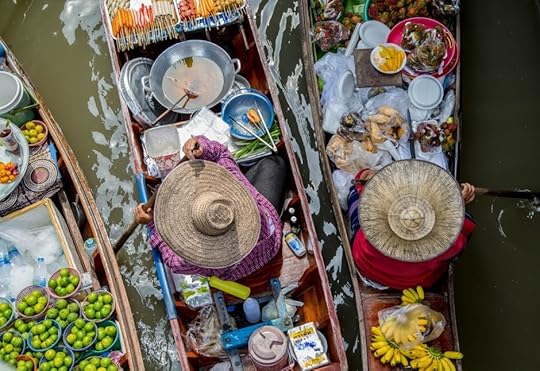
1
Amphawa floating market
Some floating markets are pretty touristy, but the Amphawa weekend market just outside of Bangkok is the real deal. The food here is cooked and served directly from boats floating along the village canal, just like when the market began in the mid-17th century.
Photo: Georgie Pauwels

2
Poi
Poi is a dance that originated among the Māori of New Zealand, and you’ll see energetic Poi dancers on beaches throughout Southeast Asia. Grab a Singha, find a hammock under the stars, and enjoy the show.
Photo: Scott Sporleder

3
East Railay Beach
East Railay Beach is where many of the longtail from Krabi dock. It's connected by paths to the peninsula's resorts as well as the picturesque West Railay Beach.
Photo: Mike Behnken

See more like this: 25 images of Thailand's most beautiful temples
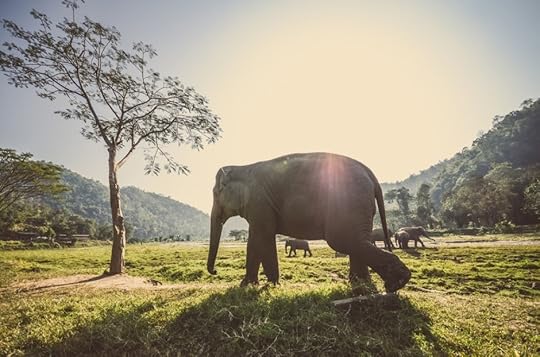
4
Asian elephants
Thailand’s endangered Asian elephants are protected in centers like the Elephant Nature Park, where you can see and interact with them in a responsible way.
Photo: Eddy Milfort

5
The Beach, Maya Bay
A hidden cove sheltered by 100-meter cliffs, Maya Bay has been a firm favorite among backpackers ever since the The Beach was filmed here for its 2000 release. Honestly, though, it doesn't take a movie to make this place look good.
Photo: Scott Sporleder

6
Nighttime tuk-tuk
Tuk-tuks are to land what longtail boats are to Maya Bay—everywhere. Make sure to agree on a fare before you hop in your ride. A short trip through the streets of Bangkok shouldn’t cost much more than 60B.
Photo: Scott Sporleder

7
Grand Palace, Bangkok
From grand thrones to spired pavilions, prepare to see a lot of gold when you visit Bangkok's Grand Palace.
Photo: DanaRiza EltraStudio
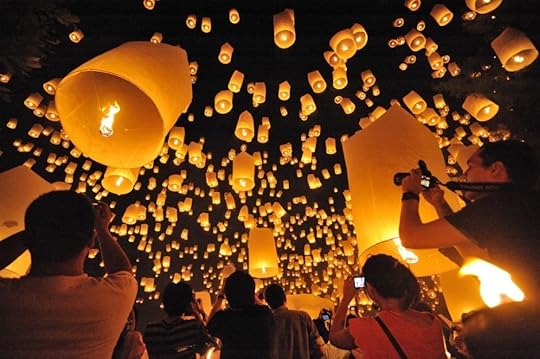
8
Yi Peng festival, Chiang Mai
As the wind casts away the wishes of Buddhists floating paper lanterns into the night sky for Yi Peng, the sky above the ancient capital of Chiang Mai glows with what looks like a million stars. This festival of light, which coincides with the Loi Krathong festival, is celebrated on the full moon of the 12th lunar month each year.
Photo: Mith Huang

9
River delta, Phang Nga Bay
Since ancient times, Thais have relied on grand rivers like the Mekong to get around and source food. This network of river estuaries by Phang Nga Bay winds through mangrove forests and right out to sea.
Photo: Ole.Pophal

See more like this: Travel guide to Thailand's most captivating islands

10
View of Bangkok from Baiyoke Tower II
If you include the surrounding metropolitan area, Bangkok is a city of 14 million—that’s 40 times bigger than Thailand’s second largest city. As an extreme primate city, Bangkok tops a list that includes Paris, London, Dublin, Budapest, and Vienna.
Photo: Link text

11
Vegetarian Festival, Phuket Town
Brought to Phuket by the Chinese at the beginning of the 19th century, the nine-day Vegetarian Festival is a riot of firecrackers, drumming, and marchers testing their endurance by splaying open their tongues, cheeks, and other body parts with homemade piercings, as well as taking hot oil baths and walking on hot coals.
Photo: Nestor Lacle

12
Sunset on Ko Chang
Thai for Elephant Island, 70% of Ko Chang is untouched rainforest and jungle-clad mountains. The west coast is famous for its coral reefs and beaches, making it a popular spot with travelers.
Photo: Pietro Motta
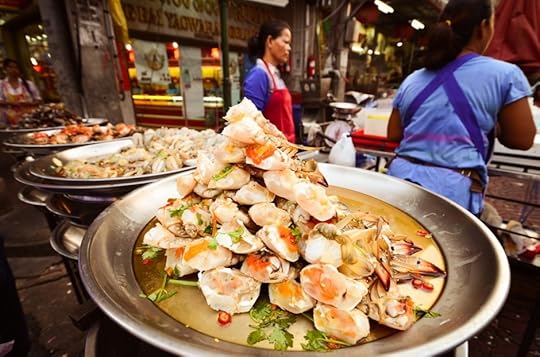
13
Chinatown, Bangkok
Sick of visiting the world’s Chinatowns only to find them more gentrified than Williamsburg? Try Bangkok, where Chinatown’s energy pulses through tiny alleys and crowded markets and you’ll find some of the best street food in a country that knows how to do street food.
Photo: Eddy Milfort
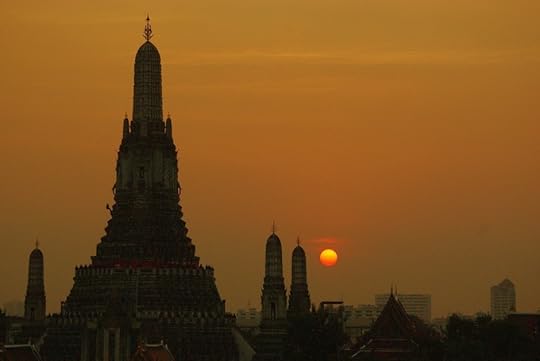
14
Wat Arun, Bangkok
Wat Arun (Temple of the Dawn) gets its name from the Hindu god Aruṇá, a personification of the first rays of the morning sun. Built in the 17th century, Wat Arun’s iconic prang (spires) were added in the early 1800s by order of King Rama II.
Photo: Adam Baker
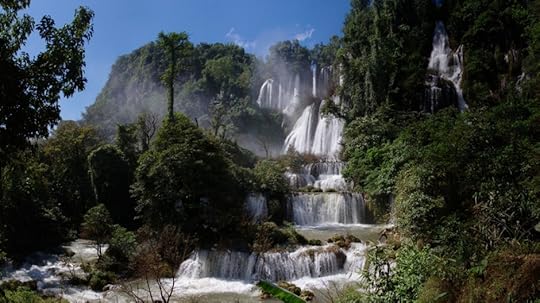
15
Thi Lo Su Waterfall
Located in Umphang Wildlife Sanctuary, a UNESCO World Heritage Site and one of Southeast Asia’s largest tracts of virgin forest, is Thailand’s biggest, tallest waterfall—Thi Lo Su.
Photo: Amir Yalon

See more like this: 19 things you probably didn't know about Thailand

16
Grand Palace, Bangkok
Home to the kings of Siam (and later Thailand) from 1782 until 1925, the Grand Palace today is only used on ceremonial occasions such as coronations. Most of the rest of the time, it's hosting hundreds of camera-ready tourists.
Photo: Ole.Pophal
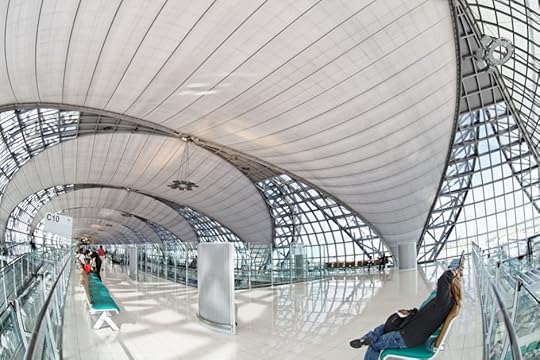
17
Suvarnabhumi Airport, Bangkok
Opened in 2006, 16 miles east of downtown Bangkok, Suvarnabhumi Airport is the busiest in the country. According to the Bangkok Post, the international airport was the world's most popular place for taking Instagram photos in 2012, with over 100,000 images snapped in one year.
Photo: Dennis Wong
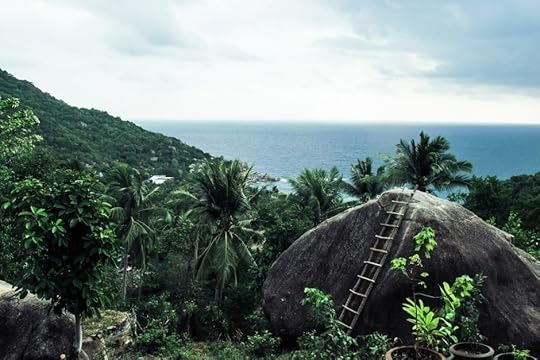
18
Ko Tao
Ko Tao (Turtle Island) is named after its shape, but it’s also an important breeding ground for endangered hawksbill and green turtles. Long known as probably the best place in the world to complete a dive certification, Ko Tao is also attracting more and more climbers who come for the towering granite boulders dotted among its forests and beaches.
Photo: Eddy Milfort

19
Sunset in Krabi
If you’re heading to a Thai island, chances are you’ll be motoring there in a longtail boat, as ubiquitous to the Andaman Sea as gondolas are to Venice, and just as photogenic. This longtail was shot in Krabi.
Photo: Mikhail Koninin

20
Muay Thai match
Known as the “Art of Eight Limbs,” Muay Thai (Thai boxing), uses eight points of contact—punches, kicks, elbows, and knee strikes—to beat the opponent. Compare that to the French savate, which uses just the fists and feet (four points), or boxing, which uses just the fists (two points), and you can see why Thai boxers beat renowned practitioners of other martial arts throughout the 20th century.
Photo: Mith Huang

21
Phu Khieo Wildlife Sanctuary
Phu Khieo Wildlife Sanctuary’s grazing area, Thung Kamang, is where you’ll see these young Thai hog deer. The respected sanctuary is also home to over 350 species of birds. To visit, you’ll have to prove an intention to study nature and arrange for permission before arrival.
Photo: Prachanart Viriyaraks

22
Wat Rong Khun (White Temple), Chiang Rai
Designed by artist Chalermchai Kositpipat in the late ’90s, Wat Rong Khun’s white walls look serene from afar, but as you walk the bridge to the entrance you’ll be accosted by a sea of ceramic arms reaching for help from deep inside hell. Inside the Buddhist temple, look out for murals of Michael Jackson and Neo from The Matrix.
Photo: Pedro Alonso

23
Jungle Yoga Retreat, Khao Sok National Park
Thought yoga was an ancient practice? It’s not nearly as advanced in years as the ecosystems of Khao Sok National Park, where the Jungle Yoga Retreat is based. Thought to be over 160 million years old, Khao Sok is the oldest evergreen rainforest in the world.
Photo: Stefan Magdalinski

24
Macaques at Lopburi
Lopburi’s 10th-century temples are 150km north of Bangkok and home to hundreds of macaques. Visit during the Monkey Buffet Festival, held annually on November 25th, when fruits and vegetables are left outside temples for the primates.
Photo: Pavel
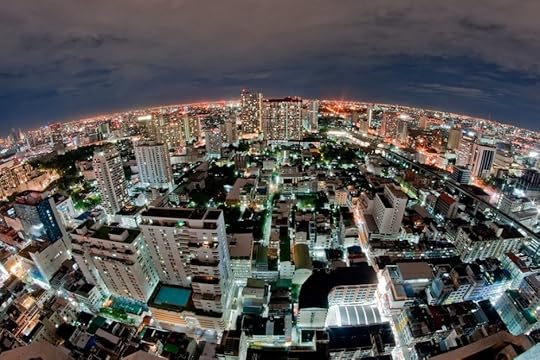
25
Bangkok by night
Bangkok has an amazing nightlife that ranges from hole-in-the-wall dive joints to glitzy rooftop bars perched on top of slinky skyscrapers.
Photo: digitalpimp.

26
Strelitzia (bird of paradise flower)
Among the palms, teak, and bamboo of Thailand’s tangled jungles, you’ll see plenty of tropical flowers like the strelitzia (bird of paradise flower), which gets pollinated by local sunbirds.
Photo: Alex

27
Buddha in a banyan tree, Wat Phra Mahthat, Ayutthaya
The sandstone head of Buddha looks serene in the roots of a banyan tree, though no one knows quite how the sculpture got there.
Photo: Selda Eigler

28
Full Moon Party, Haad Rin
Ko Phangan is the birthplace of the Full Moon Party phenomenon that has swept Southeast Asia. Still, the north and east coasts of the island remain perfectly chill. Find a beach bungalow on the water, grab a snorkel, and you’re good to go, whatever kind of partying you want to do.
Photo: Joe Stump

29
Young monks
95% of Thai people are Theravada Buddhists, and all males are expected to renounce their worldly concerns and enter the sangha (monkhood) for at least a short period of time. Nowadays, most spend little more than a week in their saffron-colored robes.
Photo: Scott Sporleder

30
Khao Lak at sunset
In southern Thailand’s Phang Nga Province, Khao Lak is a long, palm-fringed beach that’s popular with families looking for a laid-back vibe while on their holidays.
Photo: Raymond Bosma

31
Wat Arun, Bangkok
At temples like Wat Arun, it’s respectful to cover your knees and elbows. When you sit, think “mermaid,” keeping your feet tucked behind you in order to avoid accidentally shoving your lowly hoofs at images of the Buddha and other deities.
Photo: Jakob Montrasio

32
Wat Phrathat Doi Suthep, Chiang Mai
From its mountaintop location on Doi Suthep, the Buddhist temple Wat Phrathat Doi Suthep towers over the city of Chiang Mai. Come for Visakha Puja, the anniversary of Buddha’s birth, enlightenment, and death, when thousands of pilgrims walk from city to temple by night.
Photo: Mith Huang
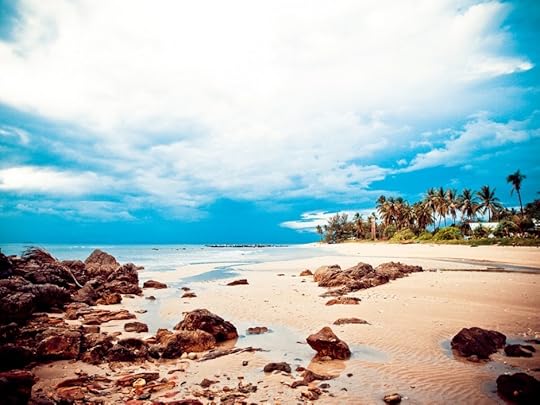
33
Ko Lanta
The island of Ko Lanta is all about nature reserves and kayaking trips through mangrove forests. As a bonus, it’s just an hour’s boat ride from Krabi.
Photo: Janne Hellsten

34
Butterfly fish, Chumphon Pinnacle, Ko Tao
Home to colorful butterfly fish, Chumphon Pinnacle is also a great spot for swimming with whale sharks (March to May, September to October). Amazingly, these hulking filter feeders are able to grow up to 12 meters long on a diet that consists of little more than plankton and tiny squid.
Photo: David Spencer

35
Red chillies
Thai cuisine relies on four main flavors—spicy, sweet, salty, and sour. Even your slice of watermelon or papaya from the local street cart will be zinged up with an accompanying dipping mix of ground chilli, sugar, and salt.
Photo: momo
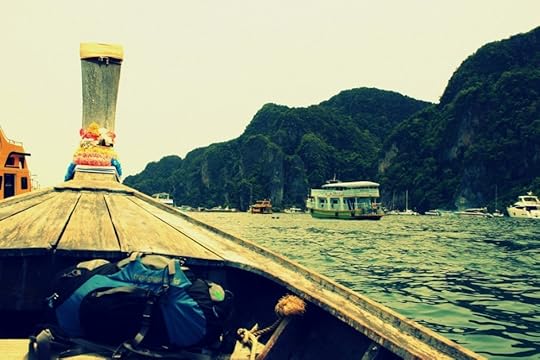
36
Longtail boat to Phi Phi
The largest and most glamorous of the Phi Phi islands is Phi Phi Don. Up until the 1940s it was a sleepy island where Muslim fishermen lived—the vibe is a bit different today.
Photo: Libargutxi

37
Wat Phra Kaew, Bangkok
Bangkok’s Wat Phra Kaew (Temple of the Emerald Buddha) is the most sacred Buddhist temple in the country. Find it on the grounds of the Grand Palace.
Photo: Dennis Jarvis
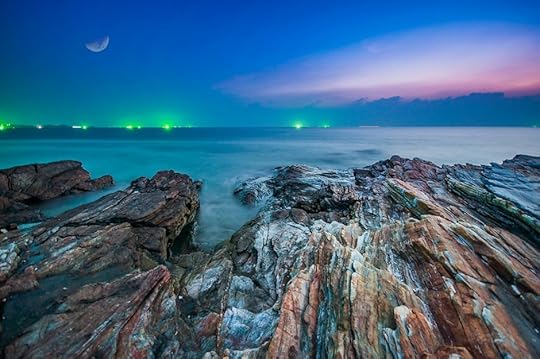
38
Night sky from Rayong
The pinks and blues of the night sky in this long-exposure photo are so peaceful. Once Thailand’s monsoon season ends in late-October, Rayong’s waters become a popular weekend getaway for Bangkok dwellers.
Photo: Prachanart Viriyaraks
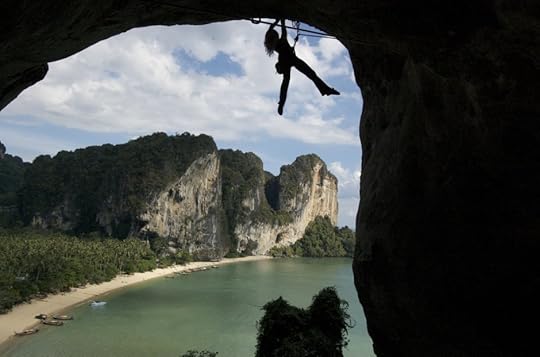
39
Rock climbing in Railay
Between Krabi and Ao Nang, Railay’s limestone karsts and crags are extreme enough to draw world-class climbers. Best way to finish a climb? Cliff jumping straight into the Andaman Sea.
Photo: Maria Ly
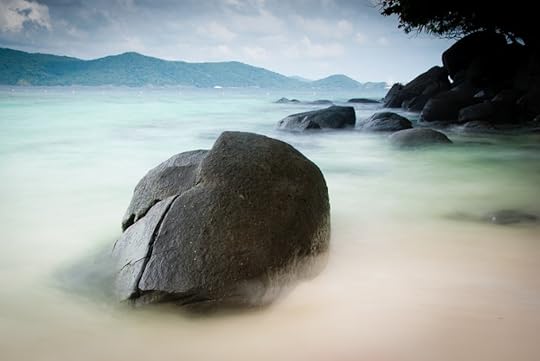
40
Coral Island, Phuket
9km off the southeast coast of Phuket, Coral Island Resort is surrounded by colorful reefs. Known locally as Ko Hae, this is a popular spot among daytripping snorkelers.
Photo: Dider Baertschiger

September 15, 2014
Grieving far from home

Photo: Andreia
I moved to Seattle from Berkeley four months before my dad died from cancer.
I would have stayed. I was unattached to place, work, or romance. I very well could have stayed. I knew he was dying. But he, being the fighter until the end that he always was, couldn’t accept my offer. He couldn’t accept the idea of me sleeping in the guest bedroom to hear him better at night. Nor could he accept me doing what needed to be done in the new quiet way that was so unlike me. It would have made it real, and he wasn’t there yet. He never did make it there.
Carolyn, a grandmother to me from my native Berkeley, sought to connect me with her friends up north when I moved last summer. One of her close ties, Ron, and his wife, Laura, invited me to housesit on Whidbey Island for the last week of September.
Before my week-long stay, they hosted me for a weekend to get to know the house, their dogs’ quirks, and the town of Langley. It’s a cliff-hugging hamlet with place names like “Useless Bay” and “Eagles Nest Inn,” home to farmers markets and a healthy grocery and old houses that line the main drag along the cliff edge of South Whidbey Harbor.
Friday evening we drove out to the water, met up with Ron’s friend Eddy, and hopped in a boat to go pink-salmon fishing. I relearned how to cast on a glassy sound and caught nothing. It was late in the season, and the sealions and porpoises were hunting alongside us. Every now and then one would arc over the water with a large dogfish in its jaws and flail it against the hard surface before plunging down again.
The gulls lingered above, waiting to snatch up bits of fish flesh that floated to the surface. I relished every moment out there on the water, holding myself steady on the rocking eddies. Ron and Eddy opened beers and wondered at the squall coming in from the west.
Everything around me was robust, youthful even — the rabbits, the centuries-old trees, the community gardens, the ferns, the porpoises, the seawater. All was deceptively thriving while my dad was dying at home.
Sitting out there I couldn’t help thinking about the uncanny simplicity of walking to a car, driving down a road to some water, and getting in a boat to fish and rest beneath the milky sky. I couldn’t help but think how I didn’t have to think about how I did these things, while my father was at home pre-planning every sojourn from his bed to the hallway to the doorway to the car, negotiating each step through cancer pain.
The next day Ron took me to the Whidbey Institute. It was where he and Laura had married several years before. There in its gateless arms was a labyrinth, a sanctuary built from native timber, and some paths through the forest. Ferns and moss blanketed the ground beneath canopies of pine. I found myself at the mouth of the labyrinth and stood there bargaining with my guilt, as if any emotion, nameless or otherwise, could be bargained with.
I remembered Carolyn saying something beautifully simple like: “Hold on to the serenity of it all, and send some to your dad. But make sure you keep some for yourself.” It wasn’t uncommon to hear such words coming out of Carolyn’s mouth, just so that you’d remember it one day while you were resisting what was.
After Ron and Laura left, I measured time by the dogs’ bathroom schedules. Every morning in the damp stillness with the dogs yanking me on their leashes, I saw the same pair of rabbits nibbling on the lawn. Langley was overrun after several breeds of bunnies got loose at the county fair years before. On the country roadsides and sidewalks, I saw longhaired ones, and some with odd splashes of color, some with awkwardly long ears, some miniature, some large. They were the kinds of sightings that brought me out of my emotional muck and made me laugh.
Other things happened. I decided halfway into my stay that I’d go farther away. In a neighboring town, I got fingerprinted for my application to teach English in South Korea at a small police department. A day later I received a message from my dad to come home. I drank tea on the back porch to ease the stomachache I got after my stepmother told me to wait. Nothing was certain. I couldn’t leave the dogs.
Everything around me was robust, youthful even — the rabbits, the centuries-old trees, the community gardens, the ferns, the porpoises, the seawater. All was deceptively thriving while my dad was dying at home. I thought about Carolyn’s words often. I thought how perfect it would be if I could give him the sensation of dew on skin and crisp outdoor air flowing into nostrils, the sounds of creaking evergreens rumbling through the walls and the big ravens calling to each other from treetops too high up to be seen.
I left the island by ferry, a day earlier than planned because I got the call: Dad had been discharged from intensive care on hospice. The sun had just gone down. The dock was quiet and swaying. Light raindrops drifted slowly sideways in the spotlight of the dock lights. Ahead of me was movement over water, by car, bus, metro, and air. I walked over the ramp into the hollow belly of the ferry and went home from sanctuary. 

Matador Network's Blog
- Matador Network's profile
- 6 followers



